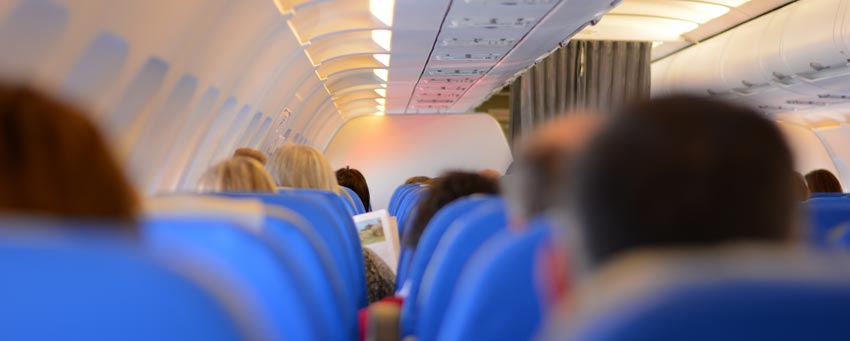
What is “fit to fly”?
The medical services of the airlines need to check that there is no risk for the patient or risk for the other passengers during the flight.
Within health assistance services there are a huge number of technical terms that require actions by medical professional groups. Due to many of them are expressions of English origin, their translation can reveal an important part of the meaning, but it actually means that behind this term, there are different protocols to be developed in a very specific way.
Nowadays, we focus on the expression fit to fly. What is it? What does it involve? What are the situations in which it is necessary? How can this be carried out? Who are the professionals concerned? We are going to explain all the details.
Fit to fly is a term commonly used in the healthcare and medical sector and directly related to commercial airlines. We must not forget that it is a requirement for patient who travel on commercial airliners.
This kind of flights has different typologies:
- Economy Class
- With one or two extraseat
- Business
- Stretcher
- PTC (insulated cabin installed in the back-end of the aircraft)
There are very few airlines that have stretcher flights and PTCs.
If we make a literal translation of this Anglo-Saxon expression, when we are saying that a patient is fit to fly, we are affirming that he is "fit to fly". So we can already have a clear idea of what we are talking about. Indeed, this term refers to those patients who, despite suffering an injury or illness, they are in a favorable condition for travelling by plane to his country.
In the case that a patient in this situation has a medical insurance policy, he will receive the necessary help to arrange the repatriation to his country of origin. This is the reason why is very important to travel always with a medical insurance company policy.
On the other hand, it is very common for a small illness to impede a patient to be fit to fly. For example, a child with chickenpox. At first, it may not seem like a very serious illness, but if you have a highly contagious viral infection patient, you should analyze the status of the illness. For a pregnant woman's health or people with low defenses (immunosuppressed) it can be dangerous and it could be an important risk. Therefore, this is another reason why we must entrust the situation to a medical team who will help making the flight safe for the flight crew and passengers.
Another document related to fit to fly is the MEDA or MEDIF. In this case it is a standard medical information form which specifies the needs of the patient during the flight. This includes issues such as if the patient needs oxygen or medication during the flight, if the patient can reach the cabin seat or travel in a wheelchair, if the patient has the autonomy to go to the toilet on his own or he will need help. Therefore, it is extremely important to be aware of the answers to the following and other questions on this form being decisive for the airline to authorize the patient's travel.
In SEMESUR ASSISTANCE we have a long experience in the management of all these documents. Not only having the forms of the leading airlines around the world (since each of them has its own particular), but we also have a direct contact with the medical services of airlines and with the departments managing these authorizations. This allows us to accelerate all these processes and minimize as much as possible the speed required by this type of medical air repatriation services.
The coordination of a patient's transfer involves the medical insurance company (contracted medical insurance), the airline and, in most of the cases, a medical company in charge of every management to make the patient travel safely 'bed to bed' , from one bed to another. SEMESUR ASSISTANCE is a specialist company in handling this type of procedures and formalities, coordinating and providing all the arrangements (the necessary resources and medical staff) within 24 to 48 hours. The time required will depend on the status of the patient and on the kind of flight he will require, considering that it is not always possible to use a stretcher or stretcher in a commercial airliner and this situation could delay the duration of the process.
In addition, SEMESUR ASSISTANCE offers a global healthcare service, so the patient on a medical escort or air ambulance will also be benefited. They will have at their disposal any medical services they may require before, during or after the transfer. The wellness of the patient will be always the main priority, because his health is the reason why we are motivated and this also drives us to ensure that, firstly, he will have the proper conditions to fly and, then, he will be able to begin his recovery process assisted by the best specialists.

 Spanish(西班牙语)
Spanish(西班牙语) English(英语)
English(英语) German(德语)
German(德语) French(法语)
French(法语) 葡萄牙
葡萄牙 中国
中国